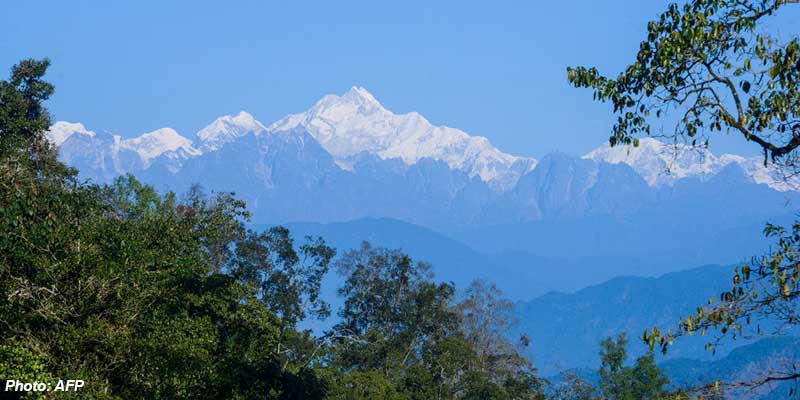- India
- Nov 07
- Sreesha V.M
Khangchendzonga National Park
• The International Union for Conservation of Nature (IUCN) has rated Khangchendzonga National Park in Sikkim as “good” in its latest World Heritage Outlook.
• The IUCN World Heritage Outlook is unique in its assessment of all World Heritage sites inscribed for their natural values simultaneously, at regular intervals (every three-five years).
• It is the only global assessment of natural World Heritage at a single point in time and recognises good conservation practice, supporting the role of World Heritage Sites in demonstrating excellence.
• It also identifies the actions needed to support sites that are facing threats, to improve their conservation outlook.
• If a site has a “good” conservation outlook, it indicates that its values and underlying attributes are currently in good condition and likely to be maintained for the foreseeable future, provided that current conservation measures are maintained.
• Some threats to the site’s values, conveyed by their key attributes, might exist and it is therefore essential that effective management efforts are maintained to ensure the site’s conservation in the long term.
Key points on Khangchendzonga National Park:
• In 2016, Khangchendzonga National Park (KNP) was inscribed as India’s first “Mixed World Heritage Site” on UNESCO's World Heritage List.
• Located at the heart of the Himalayan range in Sikkim, the Khangchendzonga National Park includes a unique diversity of plains, valleys, lakes, glaciers and spectacular, snow-capped mountains covered with ancient forests, including the world’s third highest peak — Mount Khangchendzonga.
• The KNP exhibits one of the widest altitudinal ranges of any protected area worldwide.
• The Park has an extraordinary vertical sweep of over 7 kilometres (1,220m to 8,586m) within an area of only 178,400 ha and comprises a unique diversity of lowlands, steep-sided valleys and spectacular snow-clad mountains.
• Numerous lakes and glaciers, including the 26 km long Zemu Glacier, dot the barren high altitudes.
• The KNP lies within the Himalaya global biodiversity hotspot and displays an unsurpassed range of sub-tropical to alpine ecosystems.
• The Himalayas are narrowest here, resulting in extremely steep terrain, which magnifies the distinction between the various eco-zones.
• The KNP is located within a mountain range of global biodiversity conservation significance and covers 25 per cent of Sikkim, acknowledged as one of India’s most significant biodiversity concentrations.
• The KNP is home to a significant number of endemic, rare and threatened plant and animal species.
• The combination of extremely high and rugged mountains covered by intact old-growth forests up to the unusually high timberline and the pronounced altitudinal vegetation zones further adds to the exceptional landscape beauty.
• The Park boasts 18 glaciers including Zemu Glacier, one of the largest in Asia, occupying an area of around 10,700 ha.
• Similarly, there are 73 glacial lakes in the property including over 18 crystal clear and placid high altitude lakes.
• Mount Khangchendzonga and many natural features within the property and its wider setting are endowed with deep cultural meanings and sacred significance, giving form to the multi-layered landscape of Khangchendzonga, which is sacred as a hidden land both to Buddhists (Beyul) and to Lepchas as Mayel Lyang, representing a unique example of co-existence and exchange between different religious traditions and ethnicities, constituting the base for Sikkimese identity and unity.
• The ensemble of myths, stories and notable events, as well as the sacred texts themselves, convey and make manifest the cultural meanings projected onto natural resources and the indigenous and specific Buddhist cosmogony that developed in the Himalayan region.
(The author is a trainer for Civil Services aspirants.)

